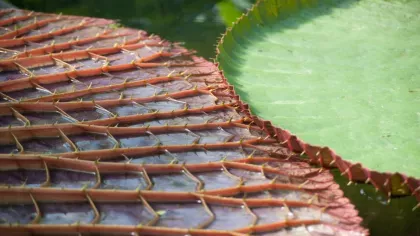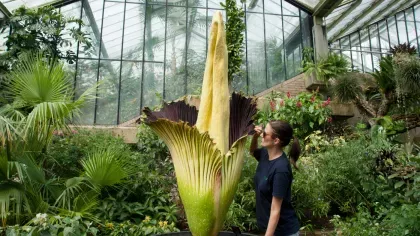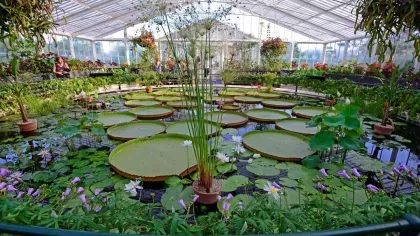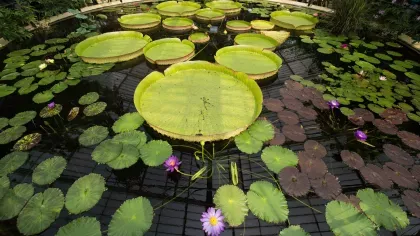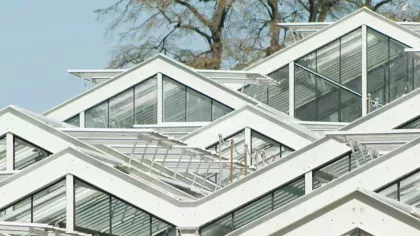
Nymphaea thermarum
On this page
Meet Nymphaea thermarum, the smallest waterlily in the world.
The pads of this miniature waterlily can be as small as 1cm in diameter — tiny compared to those belonging to the largest waterlily in the world, Victoria boliviana, which can reach over 3m!
Native to a single thermal hot spring in Rwanda where it grew in damp mud, Nymphaea thermarum is sadly now Extinct in the Wild due to overexploitation.
But thanks to Kew horticulturalists who figured out how to propagate the plant in 2009, this waterlily lives on in our collections.
Nymphaea thermarum is one of the many Guinness World Record-breaking plants that can be found at Kew.
Plant description
Nymphaea thermarum forms rosettes of pads and short petioles (the stalk attaching the leaf to the stem), measuring 10 – 20cm across. The pads can be as small as 1cm wide and the flowers, which are white with yellow stamens (pollen-producing reproductive organs), stand vertically above the plant and can self-pollinate. The flowers bloom in the morning and close early in the afternoon. Once the fruit has matured, it dissolves (dehisces) to release the seeds for reproduction.





Plant uses
Cultural
Nymphaea thermarum could become a parent to ornamental hybrids that also produce miniature waterlilies.
Did you know?
Nymphaea thermarum has been cultivated in tiny bodies of water, as small as a cup of tea
Nymphaea thermarum requires different cultivation standards than other waterlilies – the seeds need to be sown in very shallow water to be able to reach the higher concentrations of carbon dioxide present in the air and to thrive.
Kew horticulturalists cracked the enigma of growing Nymphaea thermarum in 2009. During their code-breaking efforts, the last surviving waterlily left in Germany was eaten by a rat, so the pressure was on to save this plant from extinction.
The tiny waterlily made news in 2014 when a specimen vanished from the Princess of Wales Conservatory at Kew. The thief managed to scoop up the Nymphaea thermarum specimen and is yet to be caught.
In 2023, botanists surveying a remote wetland in Rwanda discovered a significant population of Nymphaea thermarum.
Where in the world?

Damp mud formed by freshwater hot springs where water temperatures have cooled down to 25°C
Find it in our gardens
Kew Gardens
A botanic garden in southwest London with the world’s most diverse living plant collection.
Location
Waterlily House, Princess of Wales Conservatory
View map of Kew GardensBest time to see
Our work
At one point, the only surviving Nymphaea thermarum plants where living at Kew. We have since shared seeds with other botanic gardens around the world, where it is now successfully grown.
In 2009, Bonn Botanical Gardens in Germany shared seeds and pre-germinated seedlings with Kew. Our expert horticulturists set out on a mission to find ways to propagate the precious plant.
They began experimenting with different mediums, temperatures, pH levels and water depths to try and determine the ideal climate for the mini waterlilies.
After many failed attempts at propagating the plants, the horticulturalists began experimenting with different concentrations of gas.
Then there was a breakthrough – they observed that Nymphaea thermarum grows in damp mud in water at 25°C.
The plant needs to be grown at a depth of only 1cm so the seedling can reach the carbon dioxide present in the air, which does not dissolve easily in water.
Like magic, plants began to flourish and mature, and now we have more than 50 of these pygmy plants growing here at Kew.
